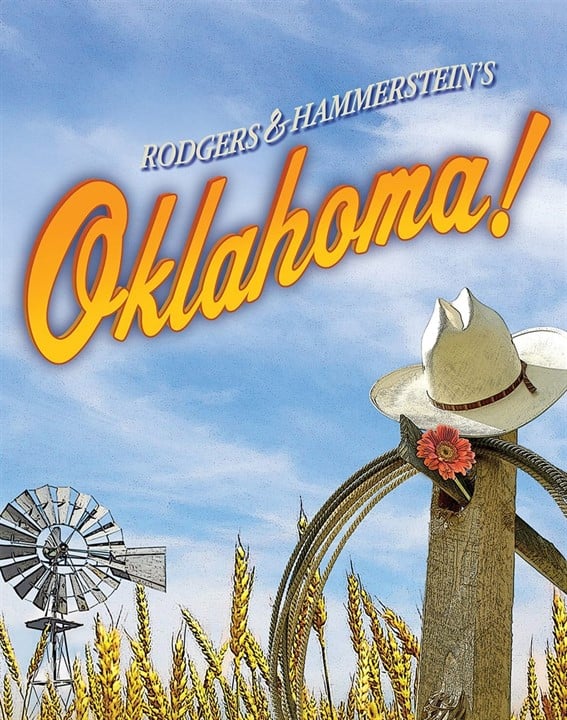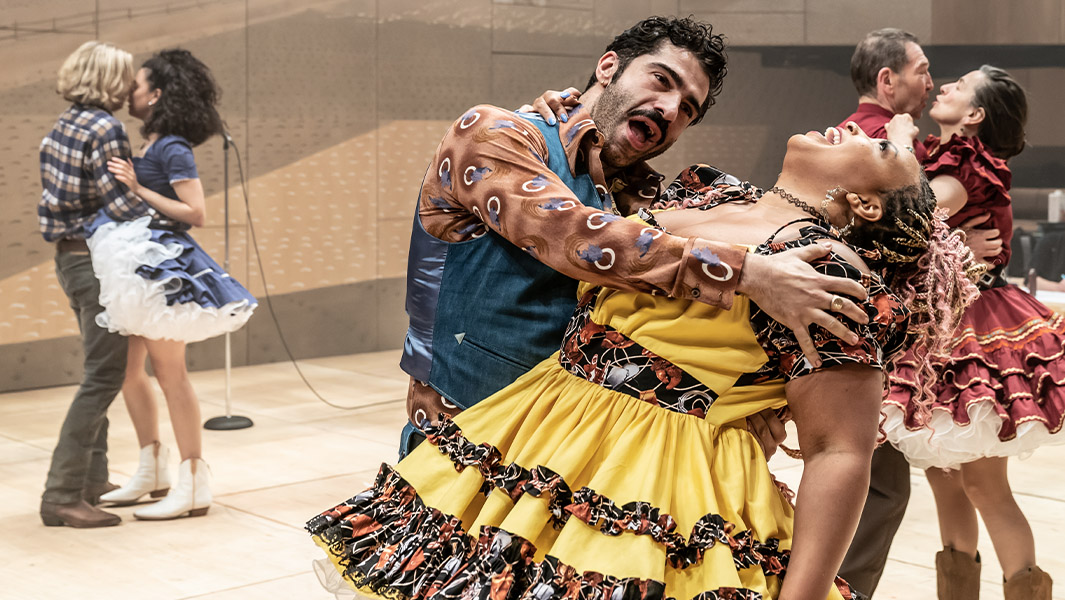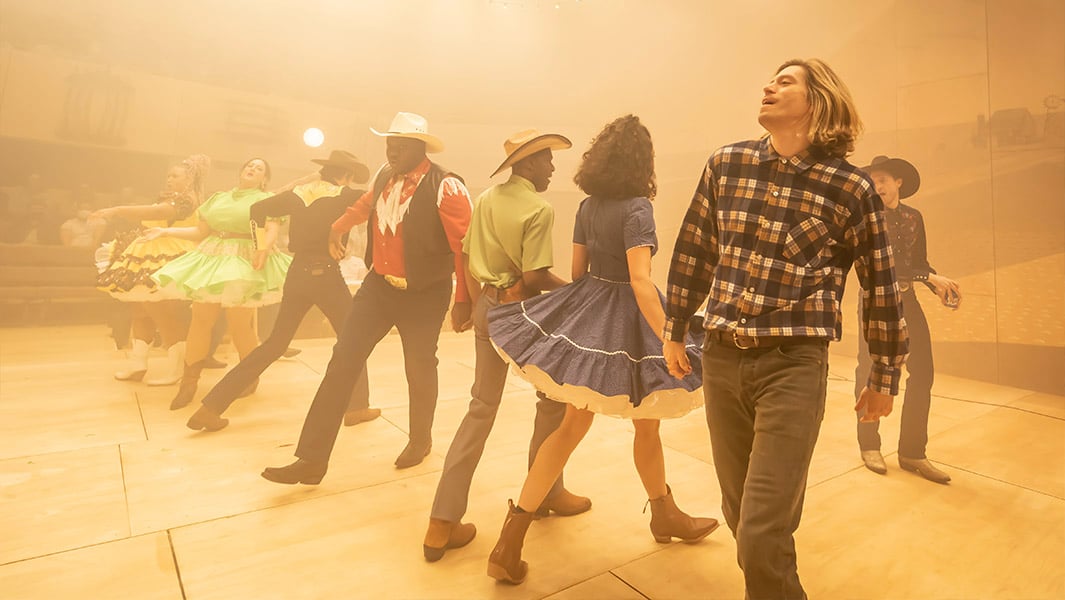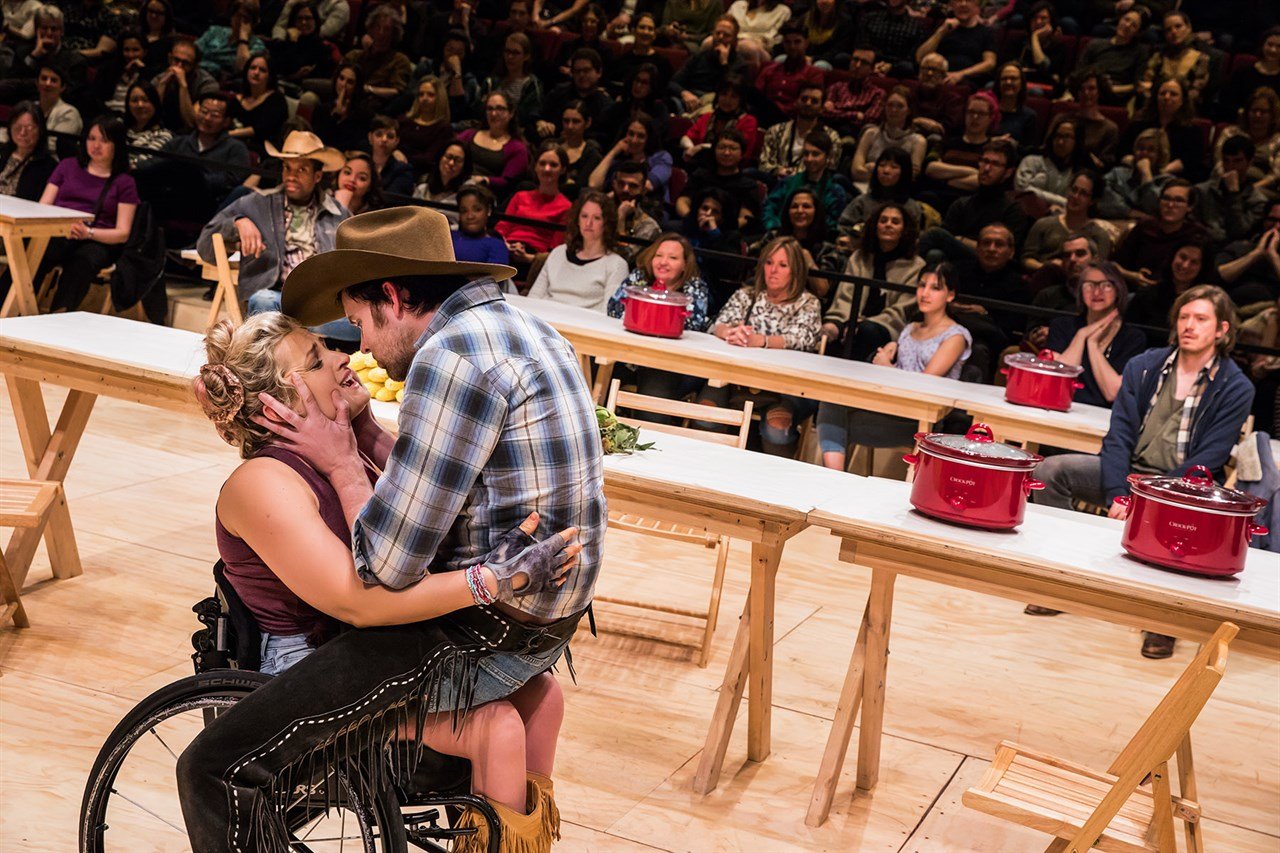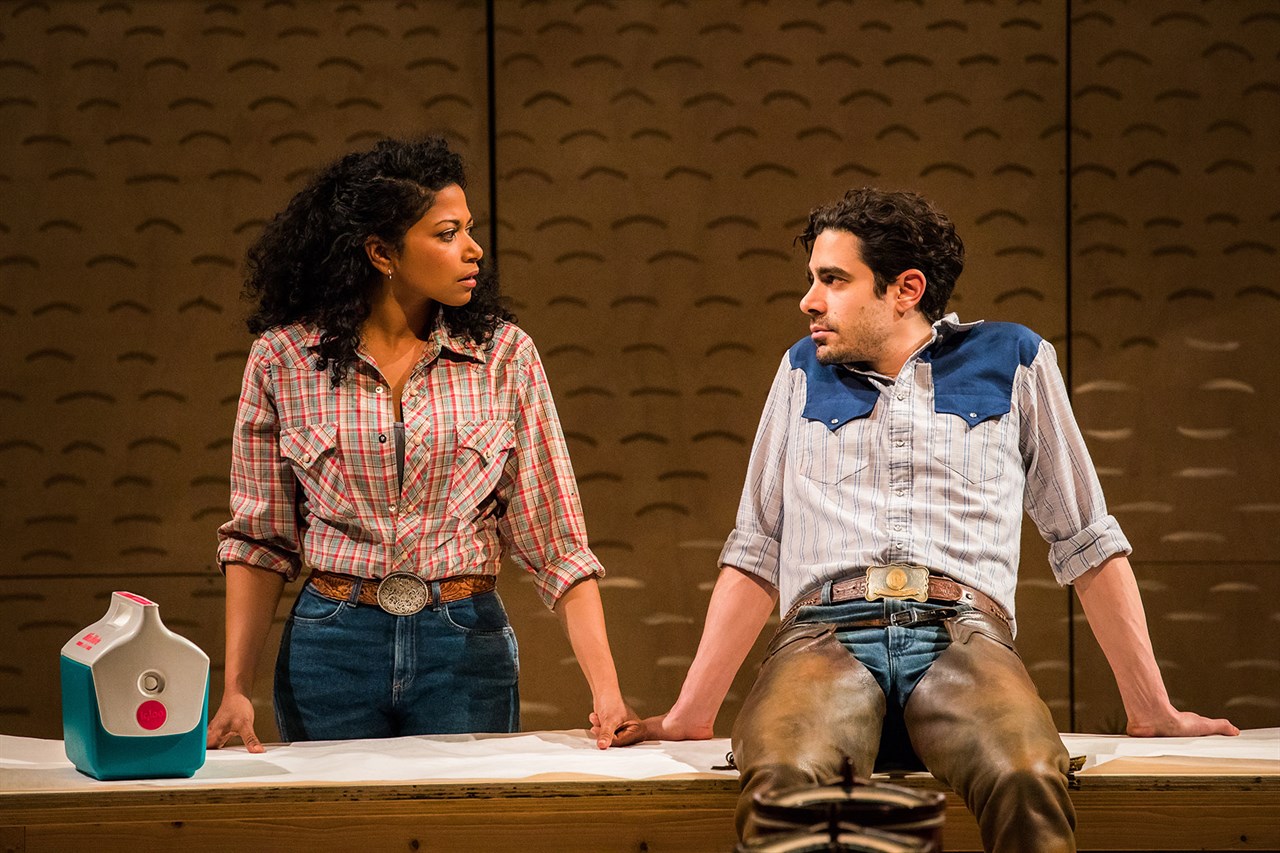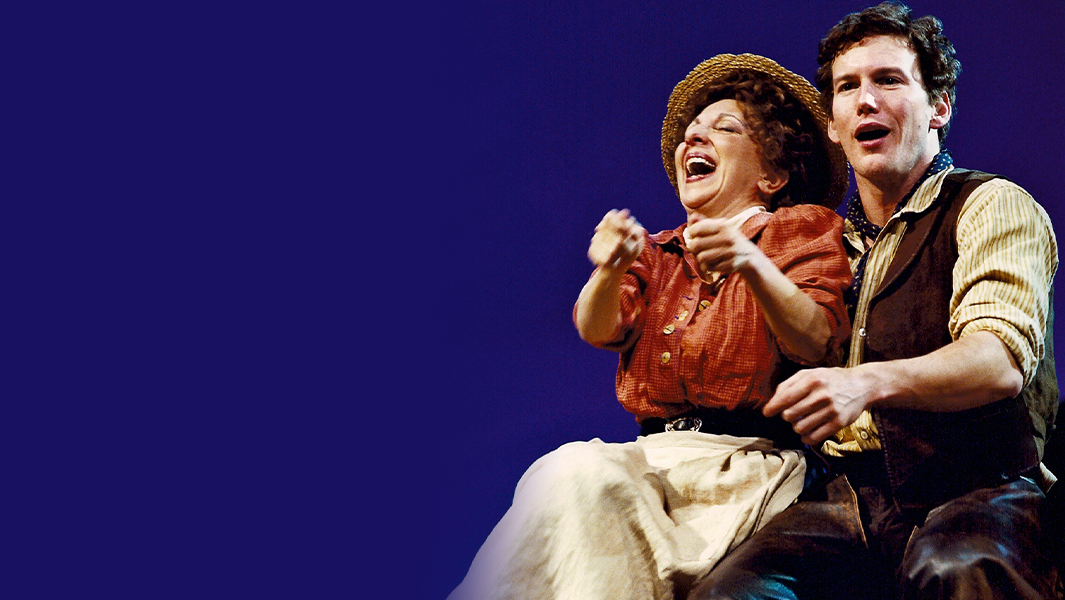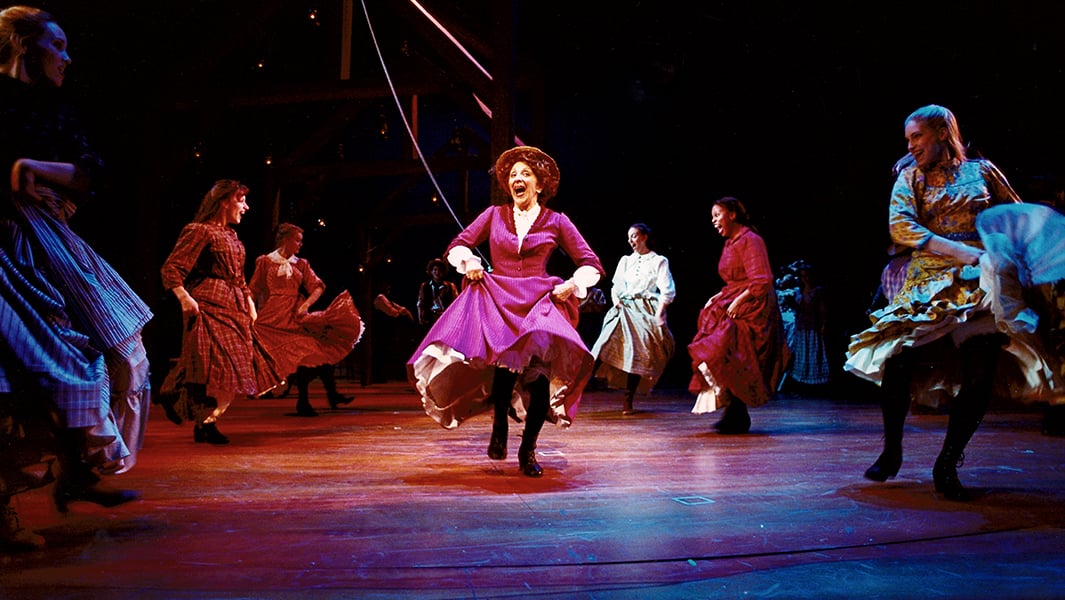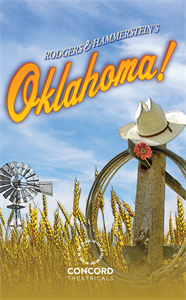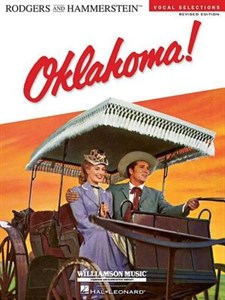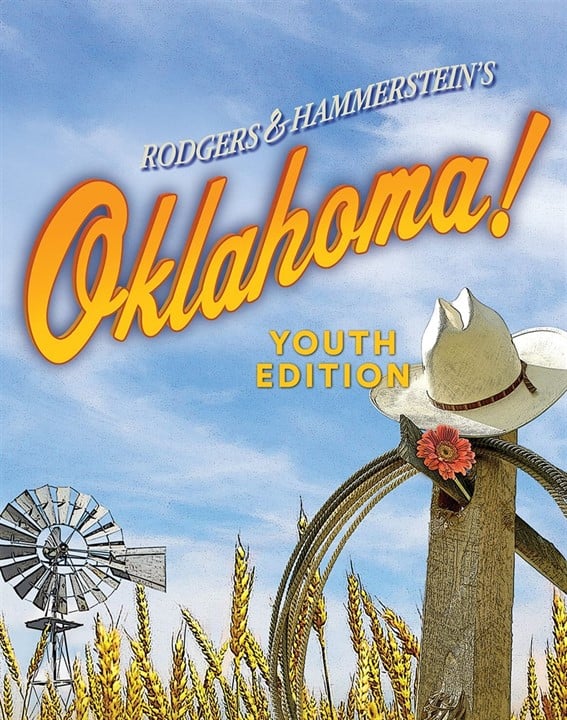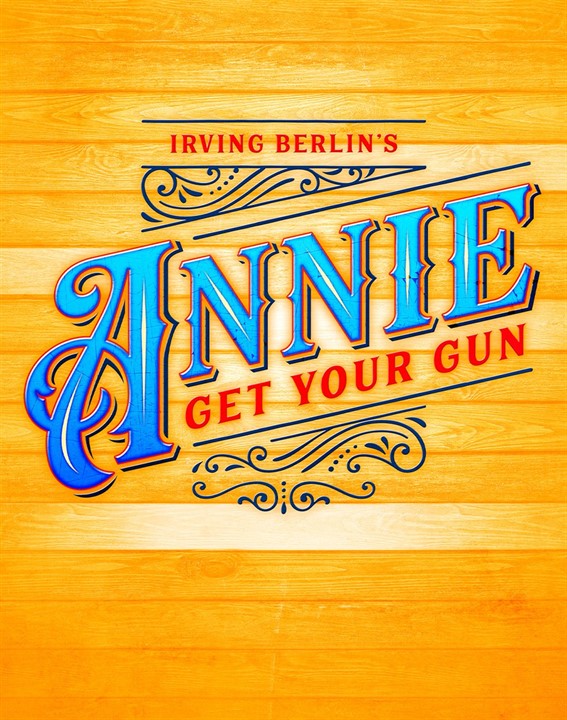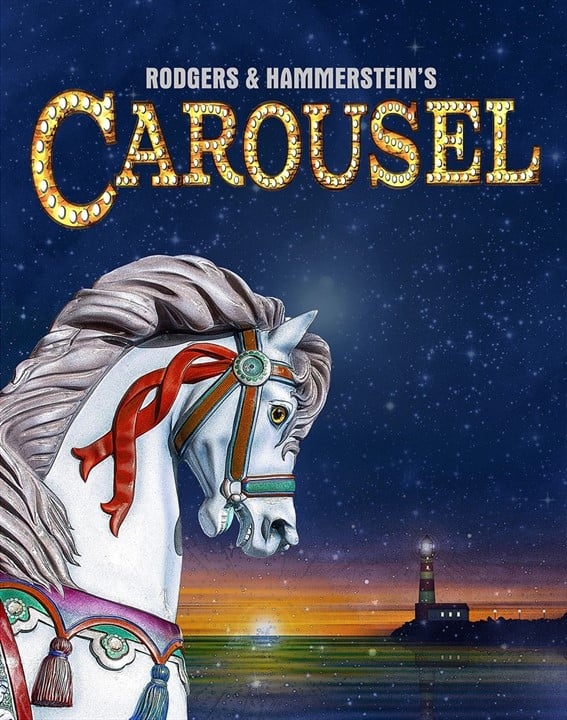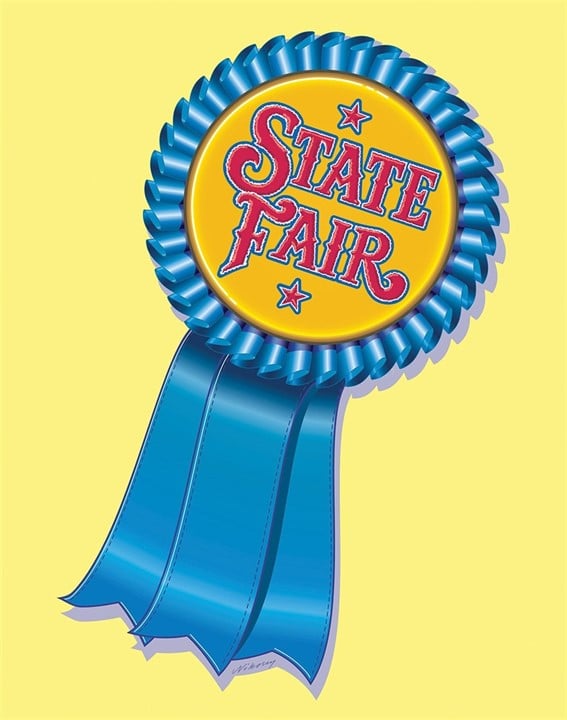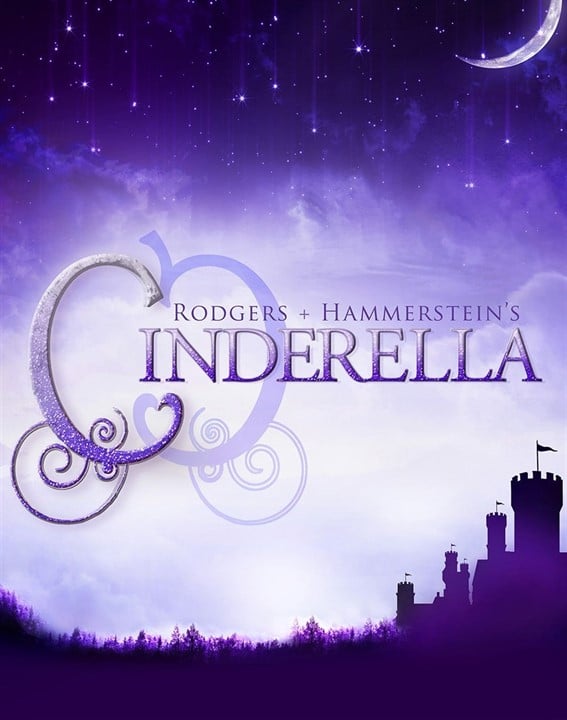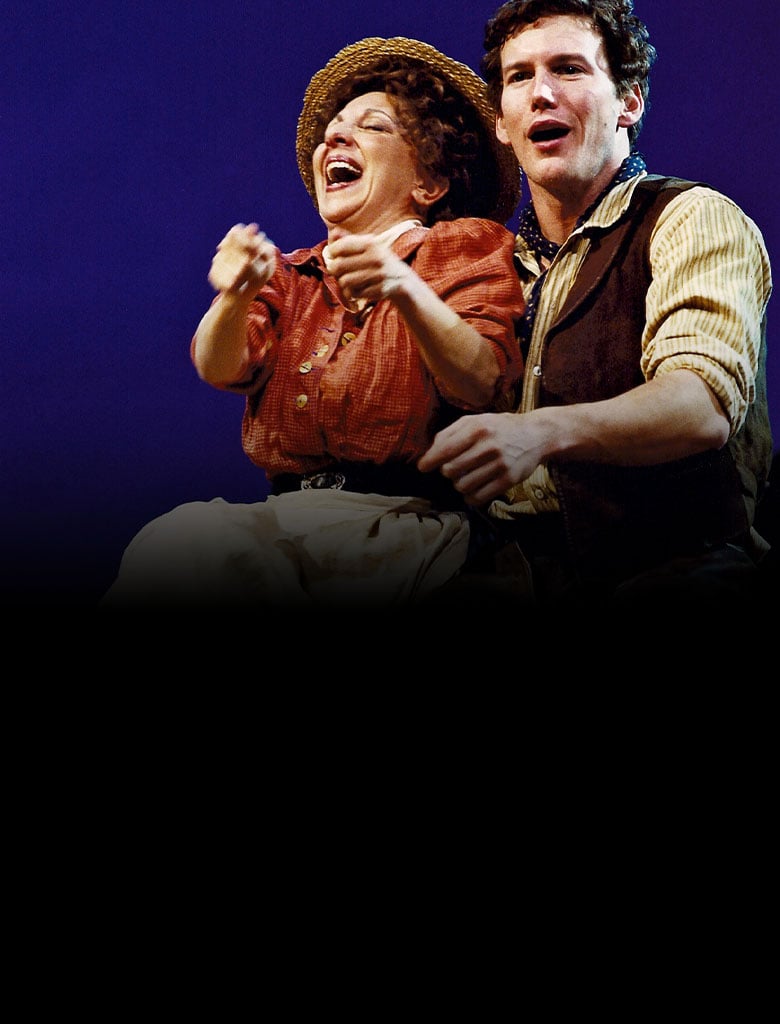
AN R&H THEATRICALS TITLE
Rodgers & Hammerstein's Oklahoma!
Full-Length Musical, Comedy / 4w, 6m plus ensemble
Music by Richard Rodgers
Book and Lyrics by Oscar Hammerstein II
Original Choreography by Agnes de Mille
Based on the play Green Grow the Lilacs by Lynn Riggs
Image: 2002 Broadway Production (Joan Marcus)
-
Cast Size
4w, 6m plus ensemble -
Duration
More than 120 minutes (2 hours) -
Subgenre
Adaptation (Literature), Period, Docudrama/History, Romantic Comedy -
Target Audience
Appropriate for All Audiences
Accolades
- (For the original version of Rodgers & Hammerstein’s Oklahoma!)
Winner! 1944 Pulitzer Prize – Special Award
Winner! Two 1956 Academy Awards, including Best Music
Winner! 1993 Special Tony Award (50th Anniversary)
Winner! Four 1999 Olivier Awards, including Outstanding Musical Production
Nominee: Two 1980 Tony Awards
Nominee: Eight 2002 Drama Desk Awards, including Outstanding Revival of a Musical
Nominee: Seven 2002 Tony Awards, including Best Revival of a Musical
Winner! Two 2019 Tony Awards, including Best Revival of a Musical
Nominee: Eleven 2019 Drama Desk Awards, including Outstanding Revival of a Musical
Winner! Two 2023 Olivier Awards, including Best Musical Revival
Details
Summary
Rodgers & Hammerstein’s first collaboration remains, in many ways, their most innovative, setting the standards and rules of modern musical theatre. In a Western territory just after the turn of the 20th century, a high-spirited rivalry between local farmers and cowboys provides a colorful background for Curly, a charming cowboy, and Laurey, a feisty farm girl, to play out their love story. Their romantic journey, as bumpy as a surrey ride down a country road, contrasts with the comic exploits of brazen Ado Annie and hapless Will Parker in a musical adventure embracing hope, determination and the promise of a new land.
Professional Artwork Available for Your Production of Oklahoma!
Concord Theatricals has collaborated with Subplot Studio to create high-quality artwork that complies with your license. Promoting your show has never been easier! Learn more at Subplot Studio.
History
This concert version of Rodgers & Hammerstein's Oklahoma! premiered on November 9, 2019 with Springfield Symphony Orchestra (Missouri), directed by Robert Westenburg.
Rodgers & Hammerstein’s Oklahoma! launched a new era in the American musical. It also began the most successful songwriting partnership in Broadway history.
Directed by Rouben Mamoulian and choreographed by a then-unknown ballet choreographer named Agnes de Mille, Rodgers & Hammerstein’s musical version of Green Grow the Lilacs, originally titled Away We Go!, made its world premiere at the Shubert Theatre in New Haven, Connecticut in March of 1943. Only a few changes were made on the road, but they were significant. One number, “Boys and Girls Like You and Me,” was cut, and a number about the land originally planned as a duet for Laurey and Curly instead became a showstopping chorale called “Oklahoma.” So successful was this number during the musical’s pre-Broadway engagement in Boston that the decision was made to add an exclamation point and make it the name of the show.
Oklahoma! opened at the St. James Theatre on Broadway on March 31, 1943. At that time, the longest-running show in Broadway history had run for three years. Oklahoma! surpassed that record by two more years, running for a marathon 2,212 performances. The US national tour played for an unprecedented ten and a half years, visiting every single state and playing before a combined audience of more than 10 million people. In 1947, Oklahoma! opened at the Theatre Royal, Drury Lane, London, where it ran for 1,548 performances, the longest run of any show up to that time in the 267-year history of the theatre. In 1953, the Oklahoma State Legislature named “Oklahoma” the official state song. In 1955, the motion picture version of Oklahoma!, starring Gordon MacRae and Shirley Jones and produced by Rodgers & Hammerstein, was released to great success.
Oklahoma! returned to Broadway several times, most recently in a reconceived and critically acclaimed 2019 revival directed by Daniel Fish.
Cast Attributes
- Time Period 1900-1910, Wild West
- Setting The territory now called Oklahoma. Early 1900s.
- Features Period Costumes
- Additional Features Stage Combat
- Duration More than 120 minutes (2 hours)
- Cautions
- Gun Shots
Media
“One of the landmarks of 20th century theatre...a defining event of American culture.” – Houston Chronicle
★★★★★ “An absolute knockout!” – The Telegraph
★★★★ “A rip-snorting, chap-slapping, foot-stamping triumph!” – Evening Standard
“A masterpiece...Rodgers & Hammerstein are truly up there with Eugene O'Neill as the great American theatre creators.” – New York Post
“If ever a show earned its exclamation point, it's this one!” – Wall Street Journal
“There's nothing corny about this wonderful, fresh show. It's not just a classic American musical but—and this is the real surprise—a truthful, touching and gripping drama about growing up and falling in love, about dreams and nightmares.” – London Daily Mail
“Forget baseball, hot dogs and apple pie. Nothing is more American than Oklahoma!... One of the landmarks of 20th century theatre, it remains a defining event of American culture.” – Houston Chronicle
“Calling Rodgers & Hammerstein's Oklahoma! a classic American musical is an understatement. Like Grant Wood's 'American Gothic' and Mark Twain's novels, or George Gershwin's 'Rhapsody in Blue' and Chuck Berry's rock 'n' roll, Oklahoma! is firmly embedded in the canon of America's greatest cultural creations.” – Wichita Eagle
Videos
Oklahoma! – Through Time and History
“The Surrey with the Fringe on Top” from Oklahoma!
“All er Nothin’” from Oklahoma!
“Oh, What a Beautiful Mornin’” – Gordon MacRae
“I Cain't Say No” and “Oklahoma” – 2019 Tony Awards
“People Will Say We're In Love” – Rodgers and Hammerstein's Oklahoma!
“Oklahoma” – Hugh Jackman
Photos

Image: 2022 Young Vic Production (Marc Brenner)

Image: 2022 Young Vic Production (Marc Brenner)

Image: 2019 Broadway Production (Little Fang)

Image: 2019 Broadway Production (Little Fang)

Image: 2002 Broadway Production (Joan Marcus)

Image: 2002 Broadway Production (Joan Marcus)
Music
Music Samples
- Musical Style Classic Broadway, Country/Western
- Dance Requirements Difficult
- Vocal DemandsModerate
- Orchestra Size X-Large
- Chorus Size Large
Licensing & Materials
- PLEASE BE ADVISED: There are multiple versions of this title. Before you proceed, please double-check to ensure that you are applying for the version you want. We will not be able to refund rental or shipping fees if you pay for the wrong version.
If you’re not sure which version best suits your needs, you may purchase a perusal for each available version.
RODGERS & HAMMERSTEIN’S OKLAHOMA!
RODGERS & HAMMERSTEIN’S OKLAHOMA!: YOUTH EDITION
